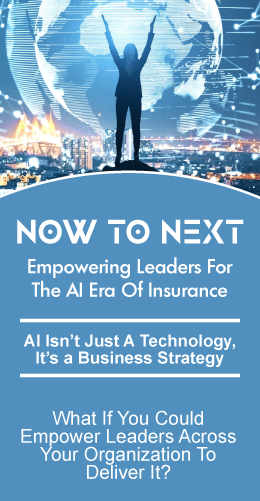Traditional P&C Products Aren’t Going to Cut It. A new generation of P&C insurance customers is entering the market. Digital Leaders understand that conventional products aren’t going to cut it and are doing something about it.
They are designing and delivering products adapted to changing consumer preferences and expectations. New generations are more digitally savvy and demand convenience, personalization, affordability, and transparency. To compete for those customers will require a few changes.
Characteristics of Next-Gen Products
To remain competitive, P&C insurance companies must deliver solutions emphasizing several key buyer expectations and needs.
Companies will need to embrace digital technologies to meet customers’ evolving needs. This includes offering online self-service portals, mobile apps, and chatbots to provide fast and convenient customer service. The solutions and customer engagement methods they offer must be personalized to meet the unique needs of individual customers. This includes customizing coverage options, offering usage-based insurance, and providing tailored recommendations based on customer data.
The new generations of customers are price-sensitive. They expect insurance products to be affordable. That means offering competitive pricing and easy-to-understand coverage models and pricing. To build trust for these new buyers, insurers must be transparent about coverage options, pricing, and claims processes.
This isn’t a once-and-done proposition. Insurers must invest in the continual development and evolution of new products. Those products must be personalized and capable of addressing emerging risks, using data analytics and AI to improve risk assessment and provide more efficient and effective customer service.
Emerging Risks
Emerging risks are changing the needs of customers. Those changes require insurers to adapt their solutions to meet those evolving needs.
Digital leaders provide cyber insurance policies covering cyber-attacks and data breaches and offering advanced technologies to improve risk assessment and protection. New insurance products that cover natural disasters promote climate resilience, and use data analytics to help customers better understand climate risks are also coming to market.
Social Inflation is another factor challenging insurers and their customers by driving up claim costs. In response, Insurers are providing comprehensive liability insurance and improving claims processing and customer service through digital technologies. Insurers are also retooling offerings to provide specialized policies to address the impact of Pandemics. Those include covering business interruption and event cancellations and using digital technologies to improve underwriting and risk assessment.
New policies are also coming to market that covers losses associated with autonomous vehicles and use telematics and data sources to improve risk assessment.
On the commercial side, insurers provide reputation insurance policies to cover negative media attention and other reputational harm.
Design Thinking is Leading The Way
Design thinking is used to create a new digital generation of property and casualty insurance solutions. By placing the customer at the center of the product design process, insurers are developing solutions for a new generation of customers who are more tech-savvy, price-sensitive, and expect more personalized experiences.
The process involves empathizing with the customer to understand their needs, defining the problem, ideating potential solutions, prototyping and testing those solutions, and finally, implementing the most effective solution. By taking a customer-centric approach, insurers can develop P&C insurance solutions that are more intuitive, user-friendly, and tailored to the needs of each customer.
Its a Digital World, It Takes Technology To Compete
The insurance industry is rapidly evolving. Advanced technologies play a commanding role from a competitive standpoint. Data and Analytics will be at the forefront. Future insurance solutions will require a range of technologies. One of these technologies is the Internet of Things (IoT). IoT devices can monitor real-time risks, improve loss prevention, and offer usage-based insurance. With IoT, insurers can gather data on how customers use their insured assets, which can help to tailor policies to individual customer needs.
Artificial intelligence (AI) is being used to automate routine tasks, provide personalized experiences to customers, and better identify and mitigate risk. With AI, insurers can analyze vast amounts of data in real time, enabling more effective decision-making and risk assessment.
Real-time data is used to track customer behavior, identify trends, and make more informed decisions. Insurers can use real-time data to provide customers a more personalized and responsive service.
Flexibility and scale will be critical capabilities. Cloud computing helps insurers gain the flexibility they need to respond to changing market needs. It can also help them scale their infrastructure, improve disaster recovery, and reduce costs. Cloud-based solutions can provide real-time updates and insights, improving decision-making and risk assessment.
Mobile technologies are critical. They allow insurers to provide on-the-go customer service and real-time updates. Mobile devices can provide a more personalized and convenient customer experience while enabling insurers to collect customer behavior and preferences data.
Finally, customer data platforms are essential. They enable insurers to collect, store and analyze customer data. By using customer data platforms, insurers can gain insights into customer behavior, which can be used to develop more effective insurance solutions and personalize the customer experience.
Overcoming The Challenges
Insurers face key technology and organizational challenges in adopting state-of-the-art technologies and delivering digital solutions. The primary difficulties are legacy systems, lack of digital skills, and cybersecurity. Legacy systems can be outdated and incompatible with the latest technologies, making it difficult and costly to update. There is also a shortage of qualified professionals who can lead digital transformation efforts, and ensuring the security of these systems can be complex.
Digital leaders have overcome these challenges by fostering innovation and collaboration, investing in digital skills, simplifying legacy systems, and adopting rigorous security measures. Digital leaders take a proactive and strategic approach to digital transformation, integrating new technologies that do not disrupt business operations and leveraging data analytics to identify potential threats and take proactive measures to mitigate risk. By doing so, they can deliver innovative and effective digital solutions that meet customers’ evolving needs.
Getting Buy-In For A New Generation of Products
It’s not easy to move an organization from talking about developing a new digital generation of products to building them. Project leaders that have been successful start by understanding their target customers’ emerging needs and preferences and the competitive landscape. Next, they assess their organization’s cultural, business, and technical strengths and weaknesses and identify the external technology solutions available to them.
After completing that assessment, they identify and prioritize the products they will propose based on customer needs and market trends. They use market research and customer feedback to refine their ideas and ensure that they offer relevant and competitive products.
Once they have a clear idea of what they need to develop, they define an agile development roadmap by breaking the project into smaller, manageable phases and using iterative development cycles to refine and improve the product continuously. They use agile development methodologies and collaboration tools to ensure that the product is being developed in a way that is responsive to customer needs and market trends.
Project leaders use their developed information to present a clear and compelling business case to get buy-offs from execs. That includes the potential benefits of the product, such as increased revenue, improved customer satisfaction, and competitive differentiation, as well as the business risk they face if they don’t do something. They also show how the product aligns with the organization’s strategic objectives and provide a detailed financial analysis demonstrating the return on investment. Project leaders have gained executive buy-in by presenting a comprehensive business case supported by data and market research. They secure the necessary resources to bring their digital insurance products to market.
Just Do it
Property and Casualty insurers need to bring a new digital generation of products to market now. The new generation of customers expects a personalized and digital experience, and insurers who do not adapt risk losing relevance in the market. Failure to do so can lead to loss of market share, declining customer satisfaction, and decreased revenue.
Your thoughts and comments are appreciated.








